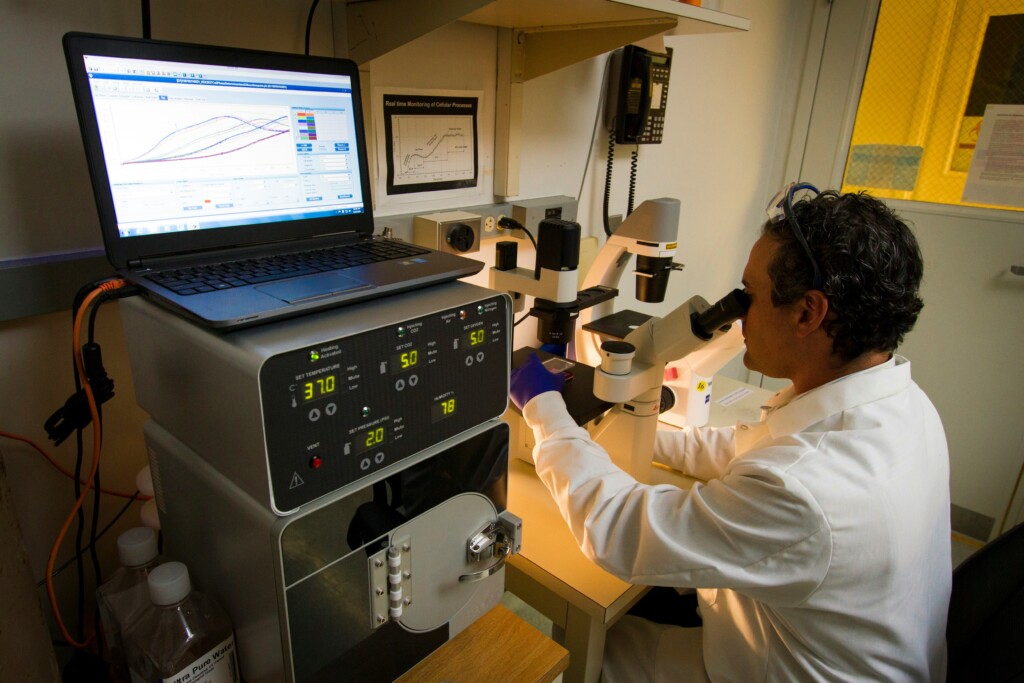Stomach-Derived Peptides: Emerging Implications and Future Research
Peptides, small chains of amino acids linked by peptide bonds, are believed to play pivotal roles in various physiological processes across different organs, including the stomach. These bioactive molecules are of increasing interest due to their diverse functionalities, which may have far-reaching implications across numerous scientific domains. Recent investigations have suggested that peptides originating from or interacting with the stomach might possess significant properties that may be harnessed in fields such as biotechnology, nutrition, and agriculture.
Beyond its possible role in digestion, the stomach serves as a dynamic environment where peptides may mediate complex interactions that influence metabolic, hormonal, and immune-related pathways. This article explores the emerging interest in stomach-derived peptides and their research implications while also highlighting specific peptide examples and their potential impact on scientific endeavors.
Gastric Function
The stomach is central to both mechanical and chemical digestion, and peptides produced or acting within this organ play a vital role in modulating these processes. Gastric peptides, such as ghrelin, gastrin, and motilin, are suggested to regulate a variety of functions, including gastric acid secretion, motility, and satiety signaling. Though their physiological relevance is well documented, it is theorized that the potential of these peptides may extend beyond digestion, influencing other systems.
- Ghrelin: Often referred to as the “hunger hormone,” ghrelin is secreted primarily by the stomach and has garnered attention for its potential impact on metabolic regulation and energy homeostasis. While its possible role in hunger hormone signaling is understood, research indicates that ghrelin may also influence processes related to growth hormone secretion, tissue regeneration, and even immune modulation. It is hypothesized that ghrelin’s potential to impact various systems may be leveraged in fields ranging from metabolic research to tissue engineering.
- Gastrin: Studies suggest that this peptide may be responsible for stimulating the secretion of gastric acid, which is essential for the breakdown of calorically dense sustenance. However, recent theories propose that gastrin might possess additional properties, such as influencing cellular proliferation within the gastric mucosa and impacting microbial populations in the stomach. It is suggested that these broader impacts might have potential implications in oncology research, particularly concerning gastric cancer, as well as in microbiome studies.
- Motilin: Research indicates that this peptide may promote gastrointestinal motility by stimulating smooth muscle contractions. Beyond its speculated role in digestion, it has been hypothesized that motilin might be involved in modulating gut-brain communication pathways, making it a candidate of interest for research into neurogastroenterology and the study of neurological disorders with gut-related symptoms.
Metabolic and Immune Pathways
It is widely accepted that peptides in the stomach not only support digestion but also participate in regulating systemic metabolic and immune functions. It has been theorized that by better understanding the precise mechanisms by which these peptides operate, researchers may unlock new strategies for modulating metabolism and immune responses.
Gut Microbiome
The stomach acts as a gatekeeper between the external environment and the intestines, and peptides involved in gastric function are believed to influence not only digestion but also the composition and behavior of the gut microbiome. It has been suggested that peptides such as gastrin and ghrelin might impact microbial populations within the stomach and downstream in the intestines, thereby modulating microbial composition and activity.
Stomach-Derived Peptides in Biotechnology and Synthetic Biology
Advances in peptide research, particularly those focused on stomach-derived peptides, are thought to hold promise for various biotechnological implications. The study of endogenously occurring peptides such as secretin (which is believed to regulate water homeostasis and pH balance) and vasoactive intestinal peptide (VIP) has inspired the development of synthetic analogs designed to mimic their functions. These synthetic peptides may be utilized in fields such as industrial biotechnology and environmental sciences, where they might be deployed in processes ranging from biosensing to bioremediation.
For instance, secretin, which is believed to help regulate the environment of the stomach and intestines, has been linked to pH balance. Its possible properties might potentially be harnessed in the development of biosensors that monitor pH levels in various environments. In addition, secretin’s role in regulating ion channels may inspire the creation of novel biomaterials or bio-inspired devices designed to control the movement of ions or other small molecules in controlled settings.
Conclusion: Expanding Horizons for Peptide Research
Stomach-derived peptides represent a rich and largely untapped area of research with promising implications across multiple scientific fields. As investigations into their multifaceted roles continue, it is anticipated that these peptides might unlock new possibilities for advancing animal function, biotechnology, and agriculture. Future studies will likely continue to explore the complex interactions between these peptides and various systems, uncovering novel properties that might lead to innovative solutions in a range of industries.
By expanding our understanding of the potential of stomach-derived peptides, researchers may not only gain insights into fundamental physiological processes but also pioneer new options to address some of the most pressing challenges in science and technology today. The full scope of peptide functionality remains a topic of much interest to researchers. The coming years are likely to reveal a wealth of implications that transcend traditional biological boundaries. Visit Biotech Peptides for the best research compounds.
References
[i] Ghrelin and Metabolic Regulation Kojima, M., & Kangawa, K. (2005). Ghrelin: Structure and function. Physiological Reviews, 85(2), 495-522. https://doi.org/10.1152/physrev.00012.2004
[ii] Gastrin and Gastric Cancer Dockray, G. J. (2014). Gastrin and gastric epithelial physiology: Where to next? Biochimica et Biophysica Acta (BBA) – Molecular Cell Research, 1843(8), 1846-1853. https://doi.org/10.1016/j.bbamcr.2014.03.015
[iii] Motilin and Gastrointestinal Motility Tack, J., & Janssen, P. (2010). Motilin and ghrelin as prokinetic drug targets. Gastroenterology, 138(3), 677-688. https://doi.org/10.1053/j.gastro.2009.12.001
[iv] Peptides in Gut Microbiome Modulation Everard, A., & Cani, P. D. (2014). Gut microbiota and GLP-1. Diabetes & Metabolism, 40(6), 442-445. https://doi.org/10.1016/j.diabet.2014.08.001
[v] Peptides in Biotechnology and Synthetic Biology Craik, D. J., Fairlie, D. P., Liras, S., & Price, D. (2013). The future of peptide-based drugs. Chemical Biology & Drug Design, 81(1), 136-147. https://doi.org/10.1111/cbdd.12055




